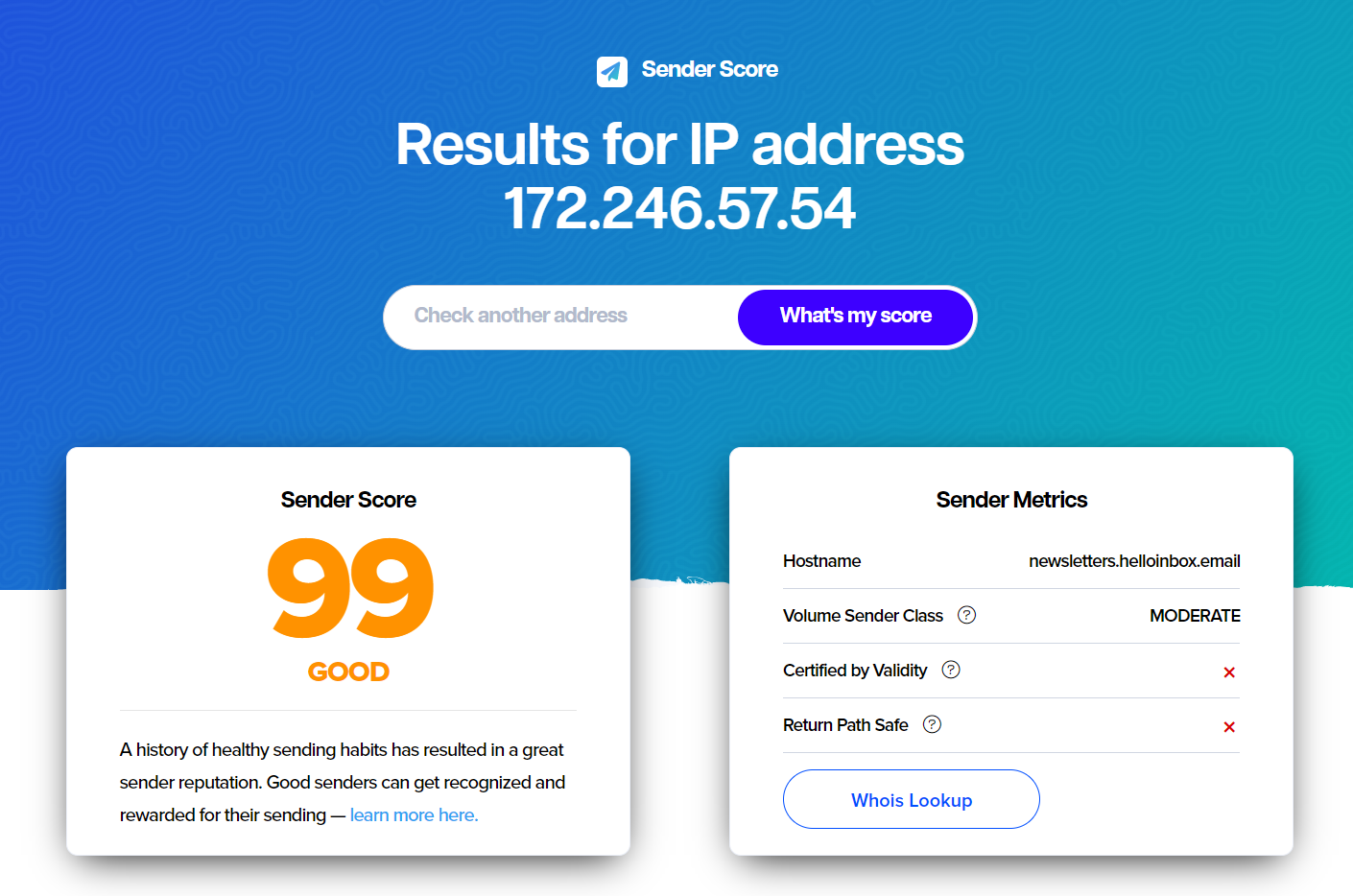Sender reputation and Sender Score are not very well understood, so I thought I’d shed some light on this important topic.
Your sender reputation is a measure of the quality of your IP address or domain, and it’s used by email service providers to determine whether to deliver an email to a recipient’s inbox or send it to the spam folder.
A high sender reputation can improve the deliverability of your emails, while a low sender reputation can hurt it.
Your Sender Score is like a credit score to gauge your credit worthiness but for email: It measures the health of your email program.
Each Sender Score is a number between 0 and 100 that identifies the quality of your sender reputation and details how email service providers view your IP address.
Who is this important for?
For businesses engaged in inbound email marketing (newsletters & drip campaigns) using an email marketing platform (ActiveCampaign, Sendinblue, Hubspot, Mailchimp, ConvertKit, Campaign Monitor, Klaviyo, Drip, Bento) and for transactional emails (welcome message, purchase receipt, comment notification or account verification) using an email delivery provider (Amazon SES, Postmark, Mailgun, Mailjet, SendGrid).
What makes a good or bad sender reputation and Sender Score?
Email service providers take a lot of metrics into consideration to determine your sender reputation score, including spam complaints, how many unknown users you email, if you’re on any industry blocklists, and more.
Here’s what determines your sender reputation and Sender Score.
- Blocklists: If you’ve engaged in spam-like behavior and landed on a blocklist(s).
- Complaints: The number of your recipients that are reporting your emails as spam.
- Infrastructure: How well you’ve configured your systems that deploy and authenticate your emails (SPF, DKIM, DMARC, SSL and rDNS).
- Sender Rejected: The amount of your mail that was blocked at the email service provider’s gateway.
- Messages Filtered: The amount of your mail that was accepted at the email service provider’s gateway, then filtered to spam or not delivered.
- Spam Traps: The number of spam traps – aka emails created to catch spammers – your IP address hit in the last 7 days.
- Email Service Provider Spam Rate: The percentage of your email that is delivered to the spam folder.
- Unknown Users: How much mail you’ve sent to users who do not exist.
- Fluctuations in Send Volume: If you’ve recently had any large fluctuations in the amount of mail you are sending.
How can I check and monitor my sender reputation and Sender Score?
There are several tools you can use:
- Sender Score: This is a score from 0 to 100 that is calculated by Validity. It is based on data from Internet Service Providers and Email Service Providers around the world and reflects the overall quality of your sending practices.
- Postmaster Tools: Use tools like Google’s Postmaster Tools and Microsoft’s Junk Mail Reporting Program that allow you to monitor your sending reputation on their platforms.
- Email Deliverability Monitoring Tools: There are also several third-party tools, such as Litmus and MxToolbox, that offer email deliverability monitoring.
To use these tools, you will need to enter your sending IP address or domain.
How do I find my sending IP address?
Use a tool like Mail-Tester.com by performing an email spam test, the report will indicate which IP address your emails are being sent from.
How do I perform an email spam test?
Log in to your Email Marketing Platform or Email Delivery Provider and create a test campaign (or test email).
Send an email to the address generated for you my Mail-Tester.com, then click on the button Then check your score.
You’ll find your sending IP address under the You’re properly authenticated tab.
